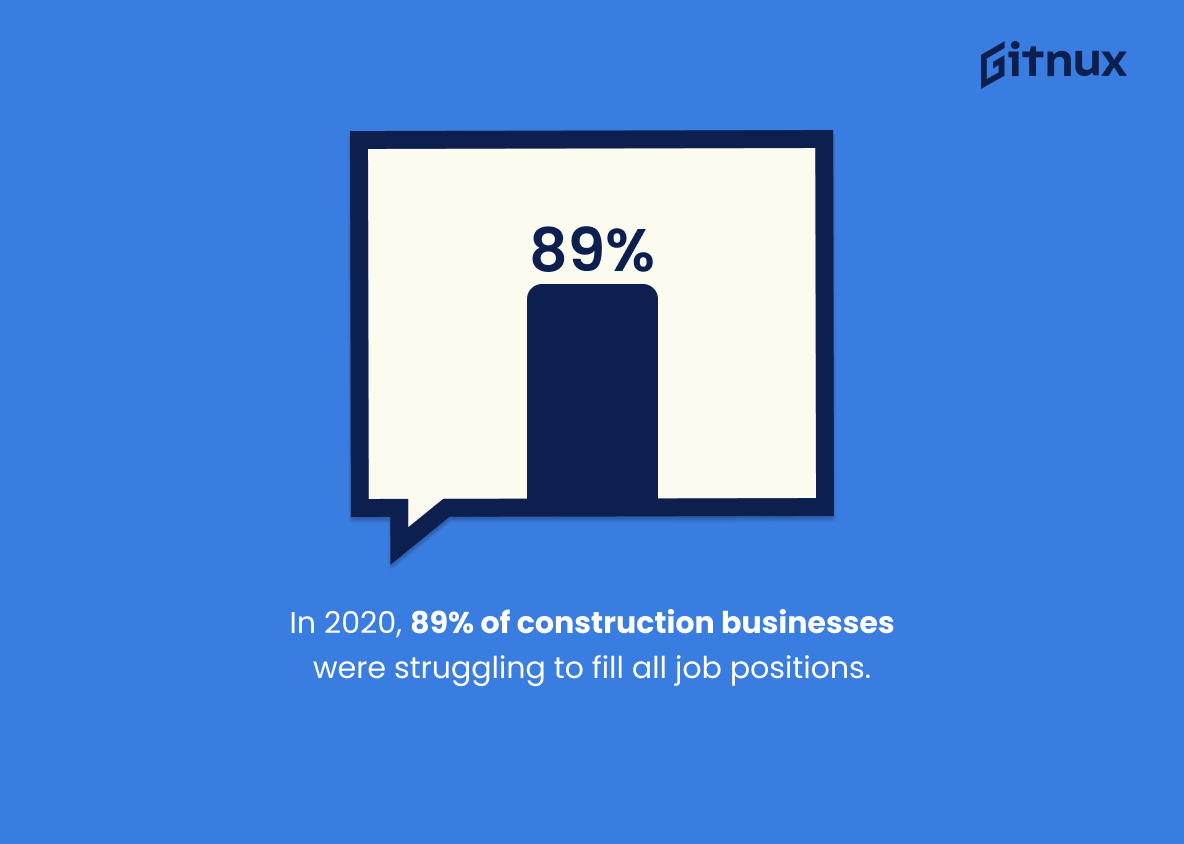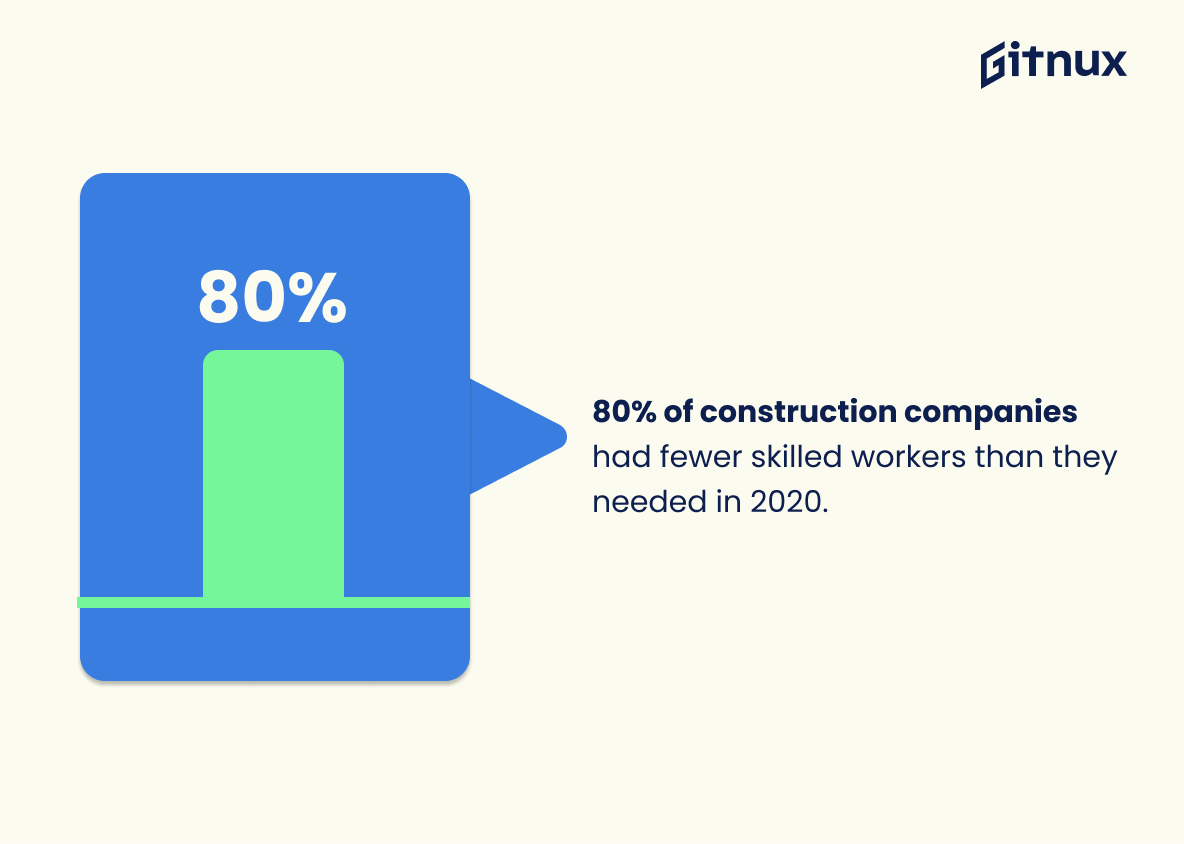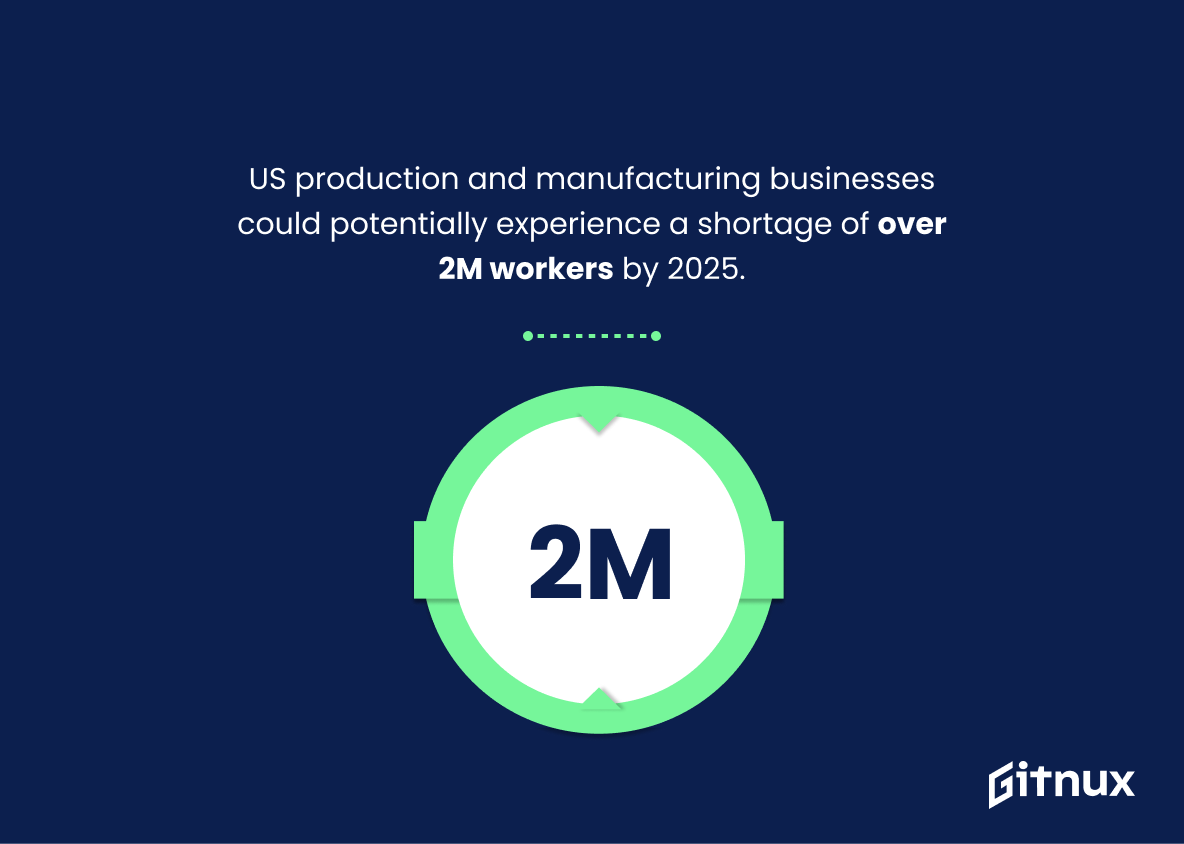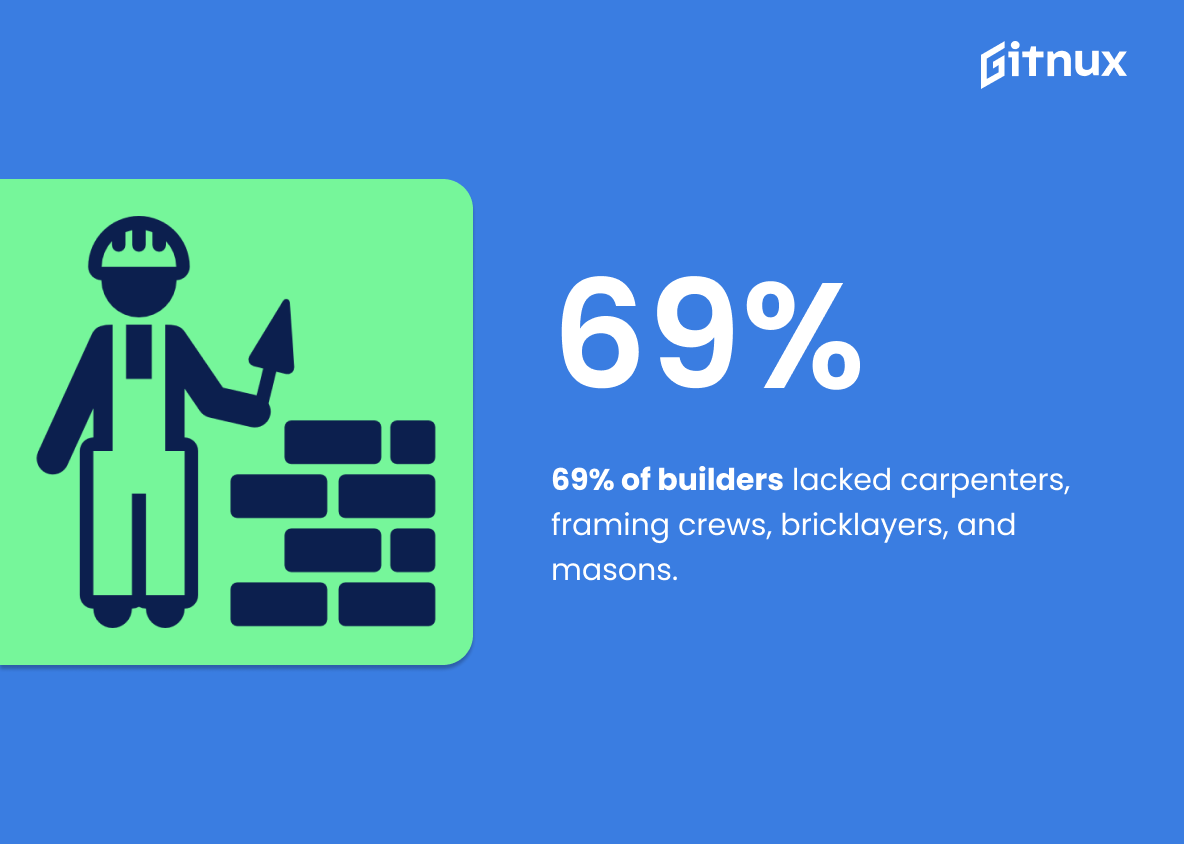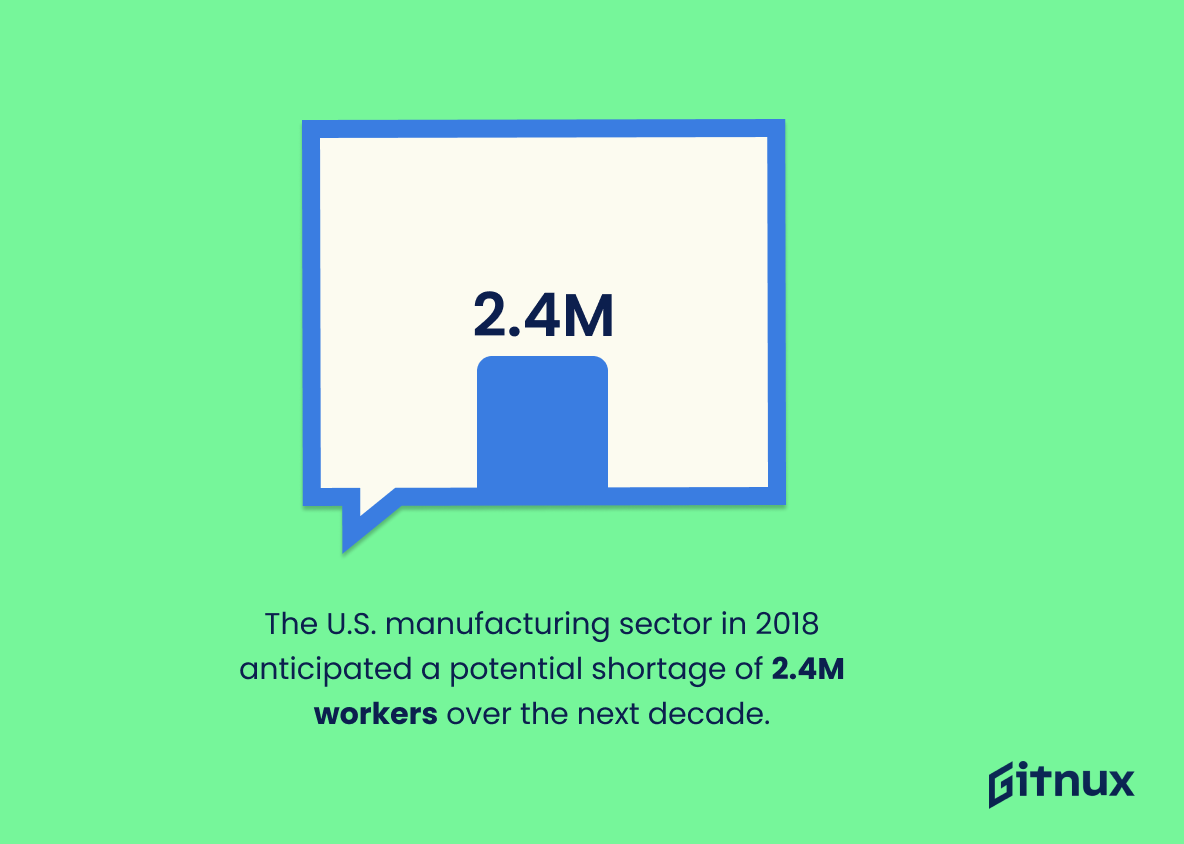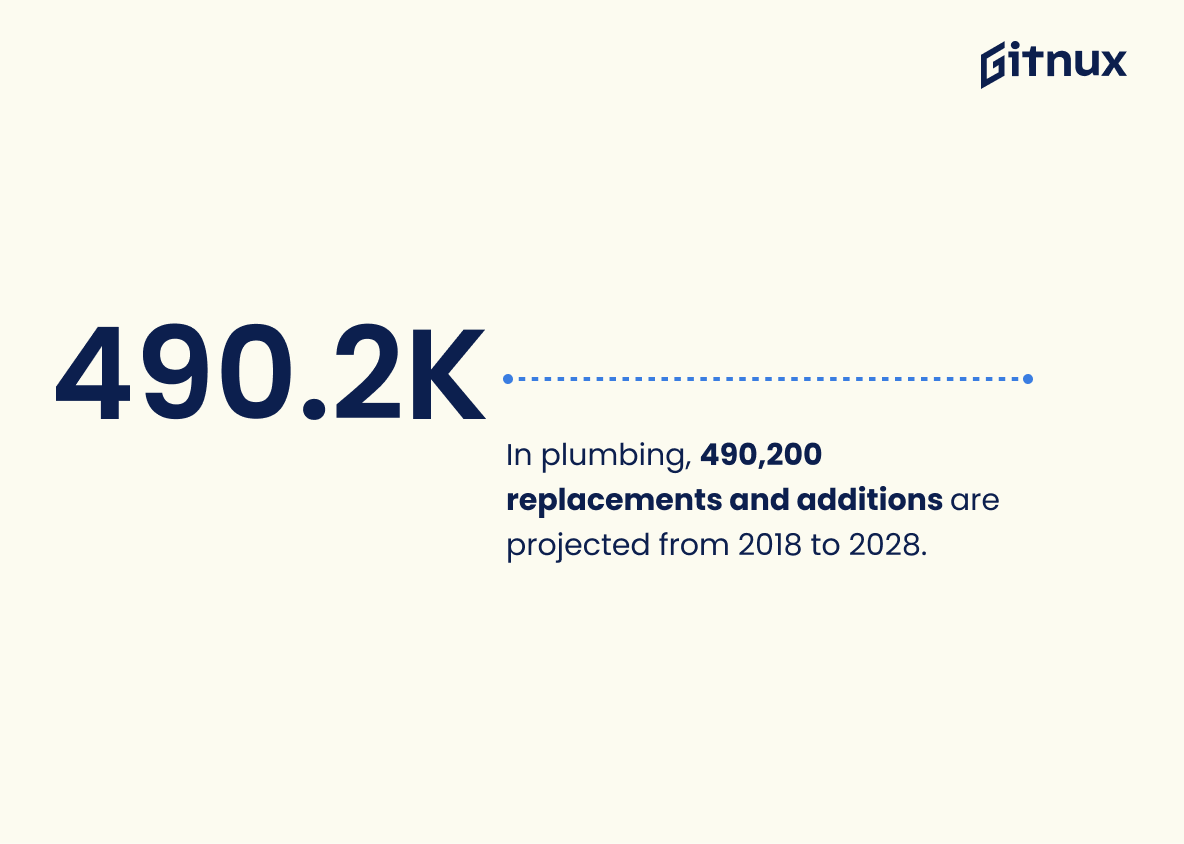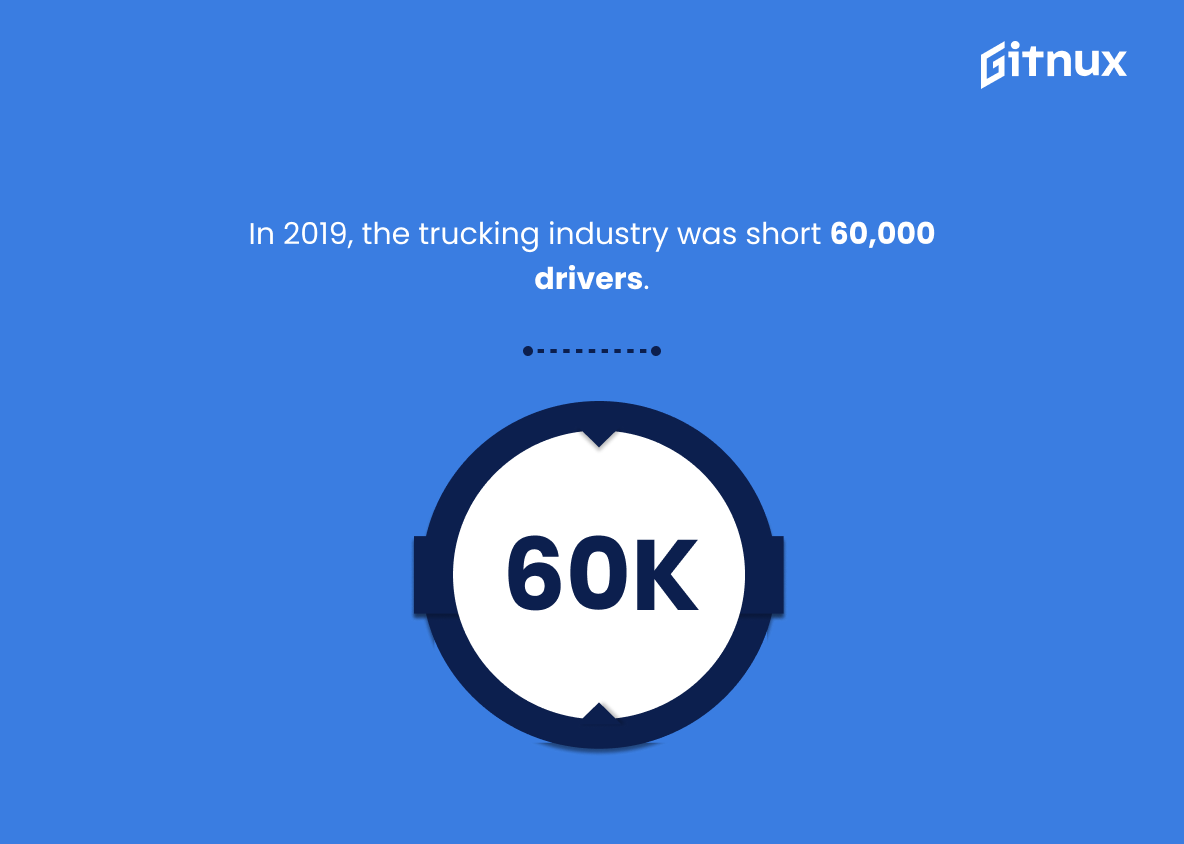There are many unseen gears that keep the cogs of our economy smoothly running, and skilled labor plays a crucial role in that mechanism. However, an in-depth look into the current statistics reveals a concerning trend – a considerable shortage of skilled labor.
The ripple effects of this crisis are being felt across industries and economies worldwide, significantly impacting growth and productivity. Today’s blog post delves into the intriguing, yet alarming world of skilled labor shortage statistics, shedding light on the magnitude of this issue, its causative factors, and potential solutions that could reshape the future of industries.
The Latest Skilled Labor Shortage Statistics Unveiled
Nine out of ten contractors are troubled by the labor shortages they are experiencing.
The striking revelation that nine out of ten contractors are wrestling with labor shortages paints a vivid picture of just how pervasive this issue has become. Within the realm of a blog post dedicated to Skilled Labor Shortage Statistics, this figure serves as a clear call to action. It’s not just a forewarning; it’s the loud tolling of a bell that signifies an urgent problem.
With the majority of contractors confronting this predicament, it’s evident that there is a necessity for substantial changes in hiring, education, or vocational training initiatives. This potent data point breathes life into the story we’re telling about skilled labor shortages, demonstrating that it’s not an isolated or rare occurrence, but rather an industry-wide challenge demanding our attention.
In 2020, 89% of construction businesses were struggling to fill all job positions.
Reflecting on the striking figure of 89% of construction businesses battling to fill job positions in 2020 underlines the depth of the skilled labor shortage predicament. This numerical narrative reveals that nearly nine out of every ten contractors are grappling with a glaring gap in their workforce.
In the tapestry of a blog post detailing Skilled Labor Shortage Statistics, such a statistic stands as a bold stitch, highlighting an industry-wide issue that demands immediate attention, critical for policy-making, recruitment trends, and projecting the future of the construction industry. The heavy impact of this shortage comes to the forefront, compelling readers to revisit their understanding of labor diversity and skill distribution, thus enriching the conversation surrounding labor market dynamics.
The labor shortage hit a peak in 2020 when there were 918,000 open jobs in trades-related fields.
Highlighting the peak of 918,000 open jobs in trade-related fields in 2020 paints a vivid picture of the magnitude of the labor shortage in this sector. This peak is not just a number—it’s a beacon alerting us to the significance of the skilled labor shortage crisis. As we trek through the landscape of labor statistics, this peak serves as a potent reminder of the vacuum that needs to be filled with skilled labor.
It underscores the critical importance of addressing this dilemma, the scale of the challenge we face, and the potential for individuals considering careers in skilled trades. So, anyone navigating through the terrain of career choices or policy-making needs to stop and consider this landmark statistic in our journey of understanding the skilled labor market.
Around 80% of construction companies reported they had fewer skilled workers than they needed in 2020.
Highlighting the striking figure of 80% of construction companies experiencing a shortage of skilled workers in 2020 underscores the severity and widespread nature of the skilled labor shortage issue within this sector. This statistic acts like an alarm bell, drawing attention to a crisis that is reshaping the industry.
In the context of a blog post about Skilled Labor Shortage Statistics, this number serves as a bold centerpiece: it’s a rallying call that provokes dialogue and impels action within the construction industry while alerting policy makers, educators, and potential workers about the pressing need for skilled labor. It also provides a clear benchmark against which future improvements or deteriorations can be measured.
U.S. production and manufacturing businesses face a potential shortage of more than 2 million workers by 2025.
Shedding light on the magnitude of the problem, this striking statistic anticipates a gaping deficit in the U.S. production and manufacturing workforce by 2025. It paints a vivid picture of the imminent labor crisis, essentially adding a sense of urgency and weight to the discourse about skilled labor shortage.
Within the landscape of the blog post, this startling projection not only crystallizes the pressing need for effective solutions, but it reinforces the imperative to invest in and expand vocational training, improve compensation, and enhance the attractiveness of skilled labor jobs. Thus, by underscoring the potential loss of millions of workers, it truly anchors the conversation, allowing readers to fully grasp the scale of the issue and the necessity for immediate action.
In 2021, 69% of builders reported a shortage of carpenters, framing crews, bricklayers, and masons.
Painting a clear picture of the current state of affairs, the statistic serves as a stark reminder of the tightening grip of skilled labor shortage in industries such as construction. The spotlight is now on the astounding 69% of builders in 2021 who found themselves wrestling with a lack of carpenters, framing crews, bricklayers, and masons.
This reality underscores the vital need for immediate actions and solutions to fight against the tide of labor scarcity that could potentially cripple the sector. Indeed, it adds a layer of urgency to this blog post, sending a distress signal about the pressing issue that demands both attention and action.
In 2018, the U.S. manufacturing sector faced a potential shortage of 2.4 million workers in the next decade.
Highlighting the projected 2.4 million shortfall of workers in the U.S. manufacturing sector by 2028 presents a compelling picture of the urgency this skilled labor crisis could instigate. With an issue as significant as this, it paints a forecast of an industry in peril unless substantial changes occur. This looming trajectory is not merely a threat to the industry itself, but heralds potential negative impacts on the broader economy, hinting at decreased productivity and hampered economic growth.
Further, it underscores the critical need for actionable strategies aimed at workforce development, educational reforms, and perhaps reconsidering immigration policies to offset this shortcoming. In short, this striking number adds considerable weight, aiding in driving home the severity of the skilled labor shortage problem.
In the plumbing industry, employers are projected to need 490,200 replacements and additions between 2018 and 2028.
Forecasted within the plumbing sector is a colossal surge of 490,200 in replacements and additions. Spanning from 2018 to 2028, this projection gives us a glimpse into the escalating demand within skilled labor. As our blog post highlights the issues surrounding skilled labor shortage, this data injects life into the narrative by providing clear, hard facts.
It frames the magnitude of the shortage in a quantifiable context, serving as a stark wake-up call for policy makers, educators, and those pondering career choices who must factor in this looming gap in the employment market. Ultimately, it underscores the urgency of investing in technical education, vocational training, and the overall value and necessity of skilled labor in our society.
From 2018 to 2028, nearly 3 million manufacturing jobs will likely be needed, 2.4 million are expected to go unfilled due to the skills gap.
Painting a detailed picture of the skilled labor landscape, the statistic vividly highlights the impending crisis that industries, specifically manufacturing, could be on the cusp of. It follows the trail of a decennial projection from 2018 to 2028, foreseeing the necessity of almost 3 million manufacturing jobs. A looming shadow lurks in the form of a colossal ‘skills gap’ with projections pointing to an alarming potentiality of 2.4 million positions remaining vacant.
When woven into a narrative on Skilled Labor Shortage Statistics, this statistic essentially becomes a driving narrative, underlining the criticality of upskilling and reskilling workers to bridge this gap. It leaps off the page not just as a number, but as a timely alert informing policy changes, strategic education planning, and industry-academia collaborations to avert the crisis and keep the wheels of the manufacturing sector, and in effect the economy, turning without disruption.
In 2019, the trucking industry was short 60,000 drivers.
Drawing your attention to a compelling statistic, we find that the trucking industry faced a staggering shortage of 60,000 drivers in 2019. Unpacking this statement illuminates one of the oft-unrecognized facets of the current skilled labor shortage. Truck driving, a fundamental cog in our global supply chain, is confronting a significant deficit.
This shortage accentuates the tensions industries face in not only attracting but also retaining skilled labor. So, when we discuss labor market dynamics, this trucking industry metric adds a new layer of complexity, highlighting how skilled labor deficits can extend beyond traditional sectors into the veins of our logistics and transportation ecosystems.
70% of construction firms reported they were having trouble finding skilled craft workers in 2017.
Delving into the core of this captivating figure, an astonishing 70% of construction firms reporting difficulty in seeking skilled craft workers in 2017, paints a telling picture of the modern labor landscape. Cast under the spotlight in a blog about Skilled Labor Shortage Statistics, it serves as a potent illustration of the formidable challenge pervading not only the construction sector but various industries alike – the gaping chasm of proficient trade workers.
Yet, the real magic lies beyond the first glance. This statistic introduces a compelling narrative on how the increasing lacuna in skilled labor supply is shaping businesses, altering strategies, and urging amendments in human resource structures. Additionally, it raises crucial questions on the broader economic effects, hinting towards potential slowed growth, steeper costs, and increased project timelines, simultaneously igniting discussions on methods to inflate the skilled labor balloon.
Furthermore, it provides a critical groundwork for assessing future trends. If this is a snapshot of 2017 – what lies ahead? The unfolding tapestry could reveal either a deepening crisis or a resolution borne from innovative approaches to training, recruiting, and retention of skilled craft workers. As such, this singular statistic transcends a mere number – it’s a beacon of the labor market terrain, shone through the lens of the construction industry.
By 2028, the manufacturing sector will need to fill 4.6 million jobs.
Painting a vivid picture of the near future, the projected need for 4.6 million jobs to be filled in the manufacturing sector by 2028 uncovers the magnitude of the skilled labor shortage crisis. It resonates like an alarm bell for policymakers, educators, HR managers, and individuals seeking employment or training opportunities alike. Within the tapestry of our blog post on Skilled Labor Shortage Statistics, this predictive data inadvertently unfurls a potential panorama of missed economic growth if crucial opportunities remain unseized.
It not only underscores the urgency to formulate and implement effective skilled labor development strategies, but also emphasizes the potential rewards of successful intervention. Simultaneously, it spotlights manufacturing as a prime sector for job seekers to practice and perfect their skills. The echo of this statistic, therefore, reverberates throughout the entire discussion, shaping our understanding of the deficiency of skilled labor and focusing our endeavours to bridge the gap.
The skilled labor shortage in the USA could leave an estimated 2.4 million positions vacant between 2018 and 2028.
Imagine, for a moment, a grand, intricate puzzle representing the economy of the USA. Each piece snugly fits into one another creating a cohesive whole. That’s how our workforce functions. Now, picture that colossal puzzle with 2.4 million pieces void. Seems disruptive, doesn’t it? Well, that’s what the projected skilled labor shortage from 2018 to 2028 suggests.
This estimation isn’t just a figure, its backbeat reverberates throughout the entire blog post on Skilled Labor Shortage Statistics. The image of those 2.4 million unoccupied positions throws into stark relief the magnitude and severity of the skilled labor crisis we’re grappling with.
This, my dear readers, is not just an employment gap, it’s a vivid indication of lost economic viability, stifled production potential, and missed opportunities for economic growth. It’s a clarion call for policymakers, educators, and employers to step up their efforts in equipping the workforce with requisite skills. To put it simply, this single statistic throws open the door to a profound understanding of the substantial ripples the deficit of skilled labor can cause in the USA’s economic pool.
In 2014, 92% of U.S. manufacturing executives expressed concern over the shortage of skilled production workers.
Integrating the theme of our blog post, “Skilled Labor Shortage Statistics,” the illustration of the dilemma that U.S. manufacturing executives faced in 2014 drastically paints a picture on the canvas of our discussion. A staggering 92% of these decision-makers echoed a collective outcry, stressing concern over the scarcity of skilled production workers.
This statistical data amplifies the harsh reality of the skilled labor shortage, becoming the pulse of the manufacturing industry that year. It underscores the gravity of the situation and the mounting pressure it exerts on the industry, thereby setting a thought-provoking backdrop for our exploration of skilled labor shortage statistics.
The US healthcare industry could experience a shortage of up to 90,000 doctors by 2025.
Painting a daunting picture of the impending labor crisis, the potential deficit of nearly 90,000 doctors in the US healthcare sector by 2025 unequivocally underscores the severity of skilled labor shortages. In the frame of a blog post about Skilled Labor Shortage Statistics, this particular prediction serves as a dramatic harbinger of the challenges ahead.
The ripple effects of such a scarcity of medical professionals are multifold, potentially compromising healthcare quality, accessibility and potentially driving up costs. Thus, it forms a poignant reminder of the pressing need for strategic intervention to avert a healthcare crisis, while adding substantial weight to the wider discourse about looming skilled labor shortages.
By 2017, 56% of skilled US tradespeople were baby-boomers nearing retirement.
The spotlight on this statistic, exhibiting that 56% of skilled US tradespeople were baby-boomers on the edge of retirement as of 2017, paints a distressing picture when you link it to the canvas of Skilled Labor Shortage Statistics. Imagine, over half of America’s skilled workforce standing at the door of retirement, leaving an impending void in the market. This suggests a labor force that is rapidly aging out and an imminent labor gap that needs to be filled.
In the face of this, it becomes immediately clear that there’s a pressing need for nurturing young talents to step into these shoes and continue the essential work these retiring baby-boomers leave behind. As we crystallize this scenario, it becomes just as compelling for industries to invest in empowering the younger generation with necessary skills, as it is crucial for understanding the depth of the labor shortage issue.
Australia’s Department of Jobs and Small Business projects a shortage of 85,000 skilled building trades people by 2023.
Highlighting the projected shortage of 85,000 skilled building tradespeople in Australia by 2023 brilliantly underscores the pressing nature and global span of skilled labor shortage. This alarming projection is not merely a number, but a keen indication of the potential challenges that lie ahead in terms of building and construction related tasks.
Unfilled positions could significantly impact new infrastructure projects, renovations, and maintenance endeavors, creating delays or cost overruns. This statistic serves as a clarion call for urgent solutions, such as improved vocational training programs and immigration policies, to close this impending skills gap. Therefore, it adds a solid empirical grounding to a blog about skilled labor shortage statistics, showing readers the real-world implications of this issue.
The UK needs to increase its number of skilled workers by 27% to avoid the labor shortage in critical areas over the next decade.
Reflecting on the impending labor crisis in the UK, the revelation that we need to ramp up our skilled workers’ base by 27% to outmaneuver substantial labor shortages in the upcoming years indeed paints a vivid picture of both the present predicament and demands of the future. Showcased in the heart of a blog post about Skilled Labor Shortage Statistics, this fact serves as a bellwether, signaling not just the alarming scenario looming ahead, but also the urgency to bridge the skill gap.
Framing the narrative in statistical terms makes it exceptionally compelling and simultaneously provides a slew of strategic insights for industries, policy-makers, educational institutions, and potential job seekers. It underscores the acute need for action within industry sectors susceptible to the conceivable shortage, essentially those that form the backbone of our economy and infrastructure.
Furthermore, for academia, the statistic shines a light on key areas that are flagged for curriculum refinements and strategic academic-industrial partnerships. For the young and aspiring workforce, this opens up a kaleidoscope of possibilities and analytical frameworks to map their career trajectory against an evolving and demanding landscape. Engagement and response to this statistic today determine our ability to avoid a labor crisis tomorrow.
Conclusion
In closing, the skilled labor shortage statistics paint a clear picture of the current challenges facing the market. Not only is the shortage affecting the growth of numerous industries, but it’s also significantly impacting the economy as a whole. However, these statistics also highlight the potential opportunities for businesses and industries to invest in training and skill development initiatives.
This could counteract the shortage whilst simultaneously empowering a new generation of skilled labor workers. As the world of work continues to evolve, understanding these statistics and strategizing accordingly will be paramount for attracting, retaining, and developing skilled labor in the ever-competitive marketplace.
References
0. – https://www.homeadvisor.com
1. – https://www.www.deloitte.com
2. – https://www.www.engineersaustralia.org.au
3. – https://www.www.theengineer.co.uk
4. – https://www.www.homeserveutility.com
5. – https://www.www.constructiondive.com
6. – https://www.www.aamc.org
7. – https://www.www.amtonline.org
8. – https://www.www2.deloitte.com
9. – https://www.www.thebalancesmb.com
10. – https://www.www.plumbermag.com
11. – https://www.www.agc.org
12. – https://www.www.trucking.org
13. – https://www.www.nahb.org

